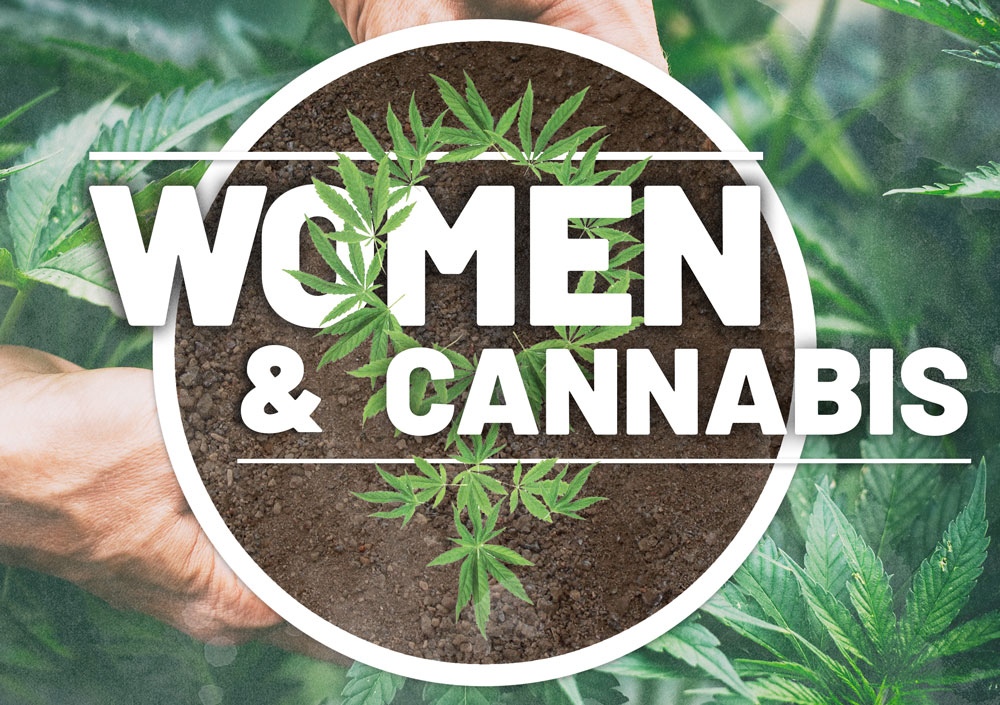By Diane Walsh
HEMP & COMPANY is a posh Canadian fashion store -featuring all ecologically friendly items – located in Victoria, B.C. on the popular tourist-stroll known as Government St. The store’s proprietors, Bill and Lorna Finley, are now proud to announce their own line, manufacturing clothing right in Vancouver, B.C. It is part of H&C’s mandate: to promote innovative North American designers and manufac- turers and give them a market-outlet for their creations. So along with the signature label Hemp & Company, the Finley’s enjoy offering a diverse array of organic items from at least 50 small entrepreneurs who specialize in eclectic clothing line-designs, hand-made jewelry, soaps and creams, all the way to food-wraps, oil, and beyond.
Diane Walsh: The big question is of course: Why should people be motivated to wear hemp?
Bill Finley: Hemp is natural. It is not made from petroleum, and it is grown basically without agricultural chemicals. The textiles are very strong which makes them long lasting (about three or four times more durable than cotton). There is a natural UV protection in this fabric. It breathes extremely well, so feels cool on the skin in hot muggy weather.
What got you into running a store that, not only sells hemp, but also features various fibre-from-nature clothing?
My son started Hemp & Co. in 1999 to sell hemp clothing. It excited me, and I joined him and opened a store in our home town of New Denver, B.C. Our Nelson store had a similar product line suited to the Kootenay consciousness. We chose to consolidate our efforts in Victoria last year, and closed the Nelson store. Nelson residents still have a wide variety of local options. In 1999, hemp was making a come-back from the years of neglect due to the Americaninfluence. Young folks were seeing the advantages of using this natural plant for food and clothing and other uses. My son saw this opportunity and started the company. There were no regulatory issues then or now.
Hemp is not marijuana, although they are related plant species.
How many stores do you have operating in Victoria at this time?
Our main location on Government St. is corporate, and we have franchised our Vic-West location and also franchised our store with a younger vibe called Shift Natural Fashion.

Are hemp fashions mostly casual wear…Can it satisfy the fancy-pants sort of person or is it mostly T-shirts and track pants? – e.g. hemp worn for work in a relatively upscale job where fashion sense is an issue.
Hemp is a textile. Anything can, and is, made from the textile.The limitation is only in the design stage. The majority of clothing in North America is casual, so therefore most of what is in our shop is casual. That is a limitation of the marketplace only. More formal hemp apparel has been consistently available from Eastern European hemp clothing manufacturers (See Eco- lution). We have many requests for men’s hemp wedding attire. People who devote themselves to the cause of sustainability see their wedding day as a very important one to stand for their values. Over the years we have sold many meters of hemp-silk blend fabric for custom wedding gowns, presumably because of its inherent beauty and its earth-friendliness. Where hemp textile makes a very easy transition in the upscale market is in the crossover of 100 percent hemp fabric, which is very comparable in texture and summer suitability to linen. Where linen creases sharply to create the recognizable look of summer, hemp’s folds are softer with the added benefit of easy laundering. Both are very cool choices for hot weather. There’s also Bamboo Rayon and Soy for the fancy-pants.
Can you say a little of pricing – that of the clothing – and, also, economics driving the industry? In my 12 years in this business, I have seen the prices of our goods stable. The economic laws of supply and demand are at work. Originally there were very few products made, and so prices seemed high. As more producers created items and more purchasers bought, volumes increased and unit prices dropped. Think organic foods that are now more competitive price wise with chemical foods than they were ten years ago. The costs of doing business have increased dramatically (rent, staff, taxes, advertising etc.) but the prices of our T- shirts have stayed the same. We are now more competitive with cheap goods, but are proud to maintain quality, made in Canada clothing.
It’s important to categorize hemp goods as specialty items that have intrinsic value not found in other market goods. To compare them with mass produced items that turn on pennies of cost to realize mil- lions in profit, is to not acknowledge the amount of specialization involved in their production. A more comparable sector is the high end fashion houses that add invisible value to their products through intensive advertising. Hemp goods have an invisible value endemic in their gentle use of earth’s resources and their incomparable durability. I hesitate to use the word “status,” but I think that there is a certain unity of understanding in people who choose hemp.
I think that there has been a greed factor in the profit driven marketplace that is not reflected in products in the sustainability sector. In the early ’90s the North American consumer was systematically lured with cheap goods from a burgeoning Chinese manufacturing capacity. As the demand for these goods and consumer spending habits increased, financed by the increasing availability of consumer credit, prices gradually increased as Western competition was eliminated. Simultaneously an increase in demand for alternative products like hemp has kept their pricing somewhat stable, even though there has been a quantum shift in quality, fit, and design.

Where is hemp clothing manufactured for the most part? Is hemp grown in regions far from manufacturing locales? If so, why is this the case?
Hemp farmers in Canada have no textile manufacturing plant to sell their raw material to. They produce mostly seed (for food and body care products). We sew and dye our clothing in Canada from hemp textiles imported from China—the only major source of textiles in the world.
Sometimes I see that a piece of clothing is made with a combination of fabrics; say, only 50 percent is hemp and the rest is something else. Is this because hemp clothing is best made that way to give it its softest feel?
Yes, the addition of cotton gives it softness. The addition of silk gives it special sheen. Some have lycra or spandex for stretch. Generally the hemp percentage is 55 or 60 percent. When H&C uses hemp/cotton blends we now mainly use organic cotton. This is an environmental issue since regular cotton uses about 50 percent of all agricultural chemicals in the farming of it.
A little insight into the “Politics of Hemp”: fashionable and earth-aware…Tell us about your links in the community (such as The Green Collective) and explain some of the sorts of initiatives you are involved in at this time?
The Green Collective is a body of retail friends who all have the environment as an integral component of our “bottom lines.” Some of us are competitors in that we sell hemp and other natural fibre clothing. However, as environmentalists we would rather the customer search out other like minded stores than resort to purchasing non-environmental clothing. We call this “co-opetition.” We have a website and a brochure with a map to the other shops. Hemp & Co. also belongs to one 1% For the Planet, an international group of businesses which pledge one percent of its gross sales to environmental groups. Last year we donated to The Land Conservancy to protect Madrona Farm, a Victoria area organic farm. This year we will continue with donations to TLC and add Raincoast Conservation Foundation.
Are you already involved with, or is there a possibility for, cross-border liaison e.g. linking up with similar green collectives in the U.S. to educate people about the merits of eco-friendly clothing?
Always! If they approach us, yes. A similar group started in Brisbane, Australia based on our model. We do link with some green groups through website links.
Why do you think you won the Business Examiner’s contest “Retailer of the year”? Clearly you are being noticed, what do you think is doing the trick?
We were taken by surprise by this great honor, I must say. Our more visible location on Government St. makes us more noticeable in Victoria. Our staff is not only friendly and helpful in sales, but also educated in the many aspects of discussing the uniqueness of the textile. Green or environmental issues are much more prominent in consumers’ consciousness than twelve years ago.
Can you comment on the recent article, “High Hope for Hemp Industries” published in Canada’s The Epoch Times?
I was very impressed with the article because it shows interest in this very important topic. Growing hemp and other fibres for food, clothing and shelter are the only weapons we have to combat global climatic changes. As shown in the article, another prime use is in paper manufacturing. Again, monetary investment is required to build the appropriate mills so that farmers can supply the raw materials to make the finished products.
Does the U.S. allow hemp clothing stores? I have seen hemp clothing for sale in the U.S. Why do these stores differ from, say, head shops which carry a degree of stigma?
Yes [the U.S. does allow and does have hemp clothing stores]. The only difference in U.S. and Canadian government policy is that our farmers can grow hemp (albeit with a license) and theirs cannot. No special requirements are needed to operate a hemp store, as opposed to any other retail operation. As for “head shops,” they are retail stores selling paraphernalia for marijuana use. Hemp & Co. is not a head shop.
Can you imagine a way to separate the image of hemp as somehow related to the use of marijuana? Is there an imagined problem with hemp products – somehow illicit?
The word “hemp,” especially in the U.S., is often used to mean marijuana. Yes there is an image, but we don’t see it as a problem, but as an educational opportunity to tell people of the many advantages of hemp as an environmental solution to many of our modern day problems.
Would you agree that the public requires an education in the nature of hemp – starting with inclusion in the school curriculum when students are taught about crops at the elementary or secondary level?
Absolutely! A run down of the history of this plant is also important.The oldest piece of fabric found by archaeologists is hemp. Two thousand years ago, the Chinese invented paper using hemp as the base. It was widely used in the sailing industry as rope and canvas for sails and sailor uniforms (the word “canvas” is derived from “cannabis” Latin for hemp). The first Levi jeans were made from hemp. Henry Ford invented a hemp plastic in the 1920-30s.
There are theories that when the U.S. banned hemp growing in the 1930s through the Marijuana Tax Law, it was pushed by the cotton industry and the chemical industry which had recently invented nylon which is a petroleum-based fabric. It was a convenient way to rid a competitor. I am not sure if those interests are in operation today.
We are in the business of education as well as selling a product, which makes us unique in the merchandising world. There are legal head shops in Victoria for those who looking for what we, by choice, do not carry. We are proud to showcase hemp for its wonderful attributes as clothing, food, and body care products.
This article is an edited version of the original which appeared in MF Magazine: www .musicfashionmagazine.com


